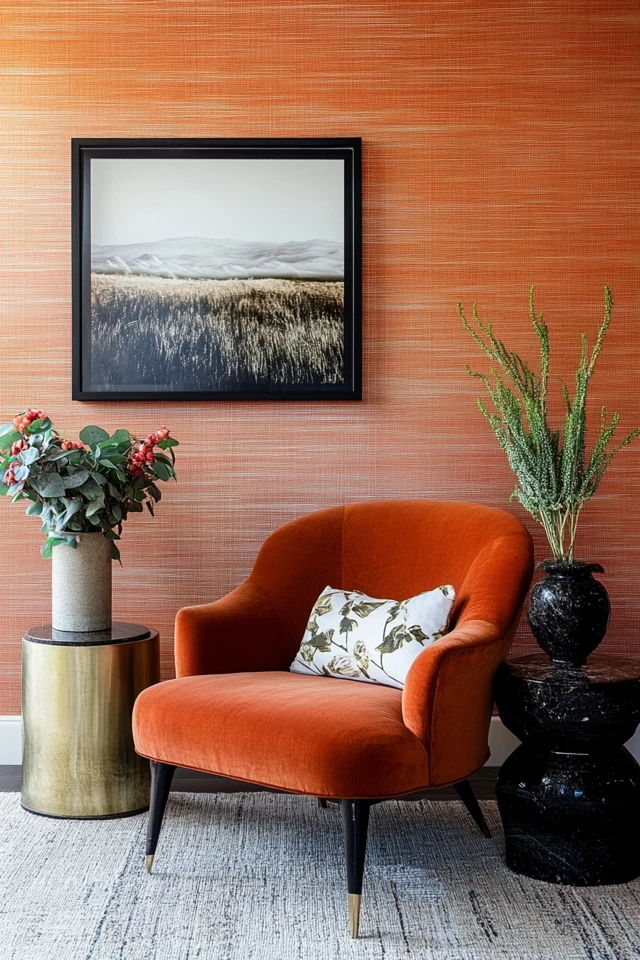Introduction
Creating a harmonious and visually captivating space isn’t just about selecting the right furniture or the perfect color palette—it’s also about how design elements interact with each other. This is where the concept of visual rhythm comes into play. Inspired by the rhythm we hear in music, visual rhythm is about creating a sense of flow and movement in your interiors by repeating patterns, shapes, colors, or textures. When done right, it brings a sense of harmony and cohesion that’s not only pleasing to the eye but also to the mind.
I experienced the power of visual rhythm while working on a friend’s open-plan living and dining area. Despite having beautiful pieces, the space felt disconnected and chaotic. By introducing recurring elements—like a striped rug in the living area that echoed the linear pattern of the dining chairs and using pops of teal throughout the decor—we achieved a balanced, unified look. The space transformed into one that felt effortlessly tied together yet dynamic, with each section flowing seamlessly into the next.
In this guide, we’ll explore how to incorporate visual rhythms into your home design to create a sense of balance, movement, and aesthetic harmony. Whether you’re reimagining a single room or designing an open-concept space, these tips will help you infuse your interiors with rhythm that catches the eye and soothes the soul.
The Perfect Design for You
Incorporating visual rhythms is ideal for anyone who:
- Wants to create a cohesive design that flows seamlessly from one area to another.
- Enjoys bold or subtle patterns and repetitions that make a space feel intentional.
- Struggles with designing spaces that feel disconnected or chaotic.
- Appreciates thoughtful design that evokes harmony and balance.
Imagine a bedroom where the circular shapes of a pendant light are echoed in the rounded edges of a headboard, mirrors, and a soft polka-dot rug, creating a calming sense of unity. Or think of a living room where stripes on a pillow are repeated in a bold wallpaper pattern and again in an area rug, creating movement and continuity. These are examples of how visual rhythms can add structure and a touch of artistry to your home.
Whether you’re drawn to minimalist design or maximalist spaces, visual rhythm can elevate your interiors, making them feel curated and harmonious.
Picture Gallery
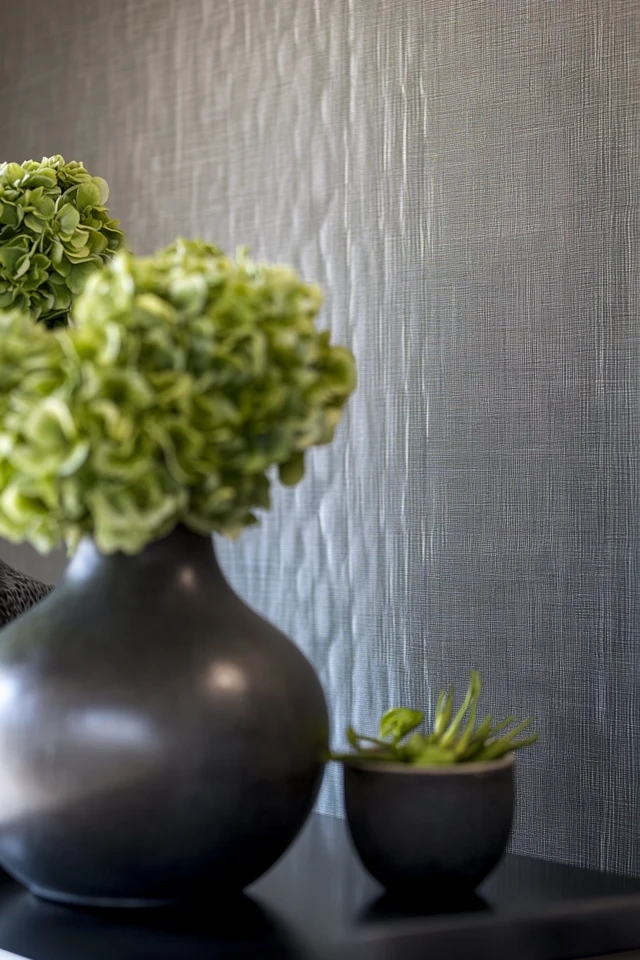
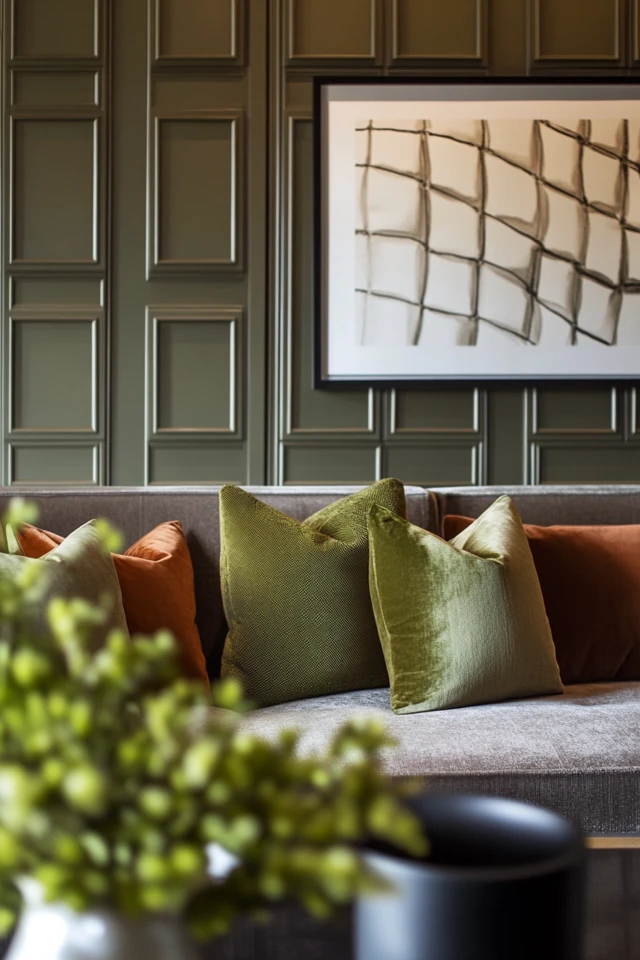
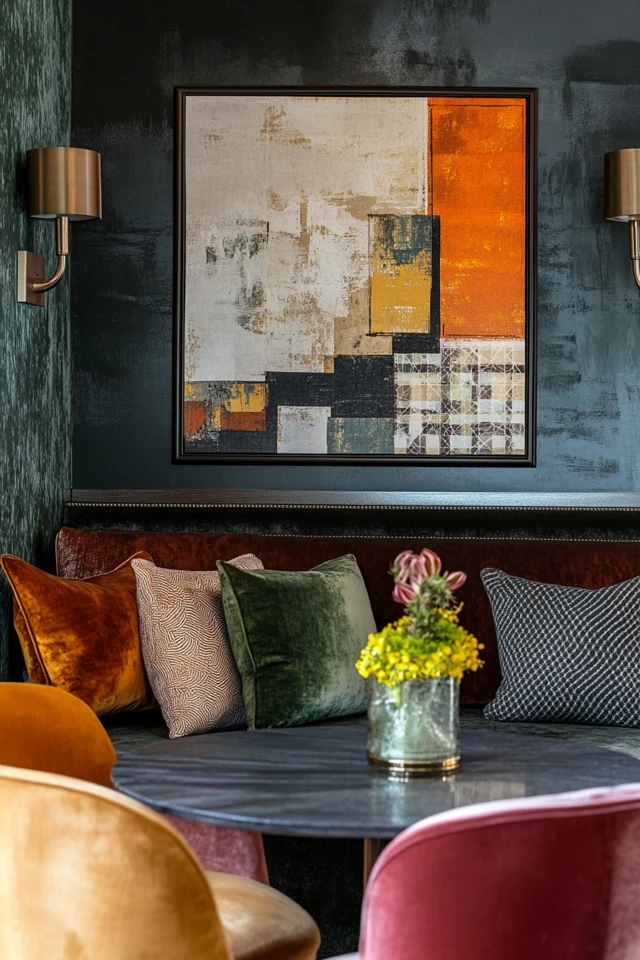
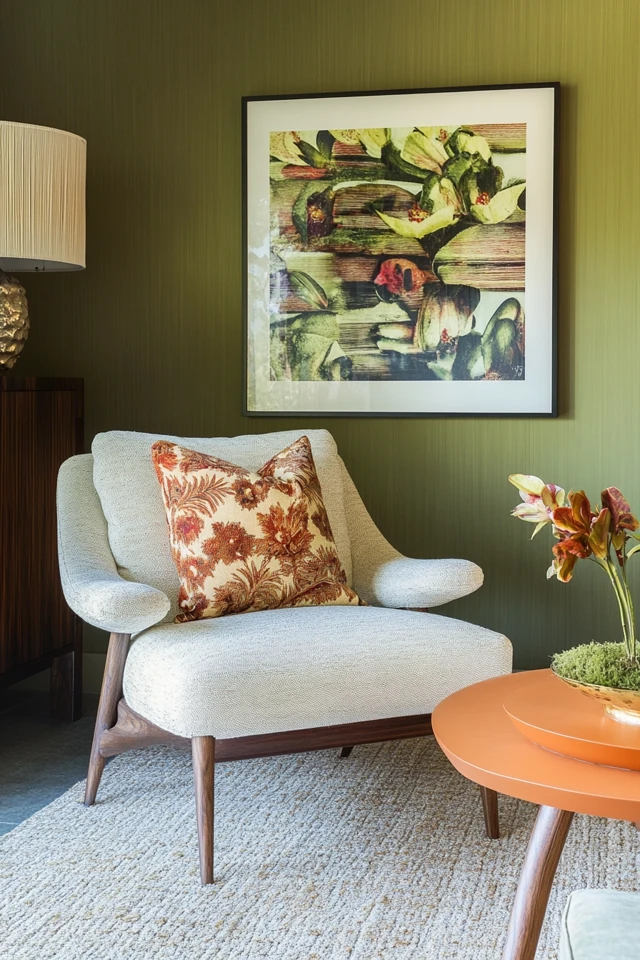
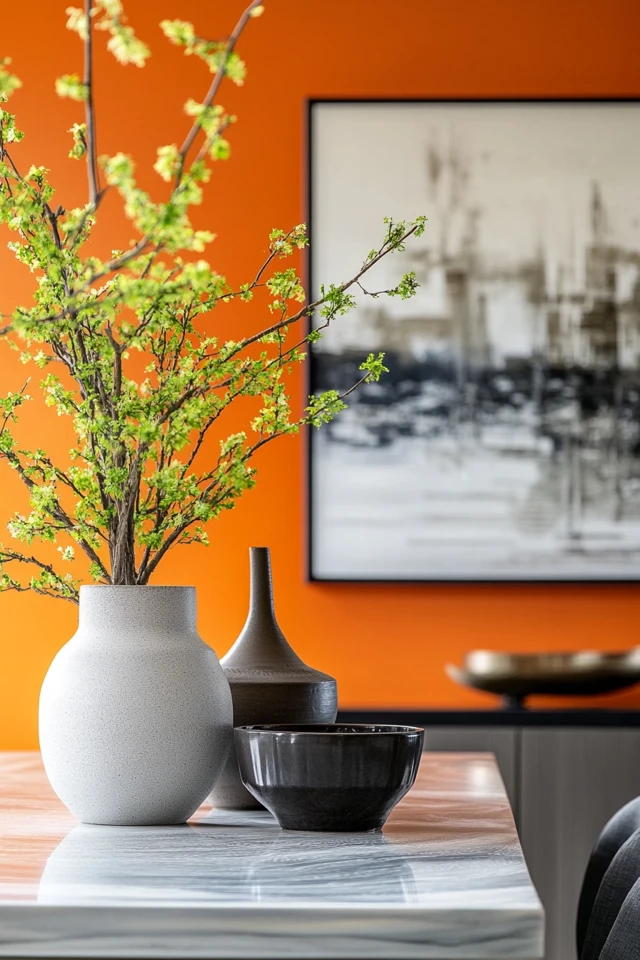
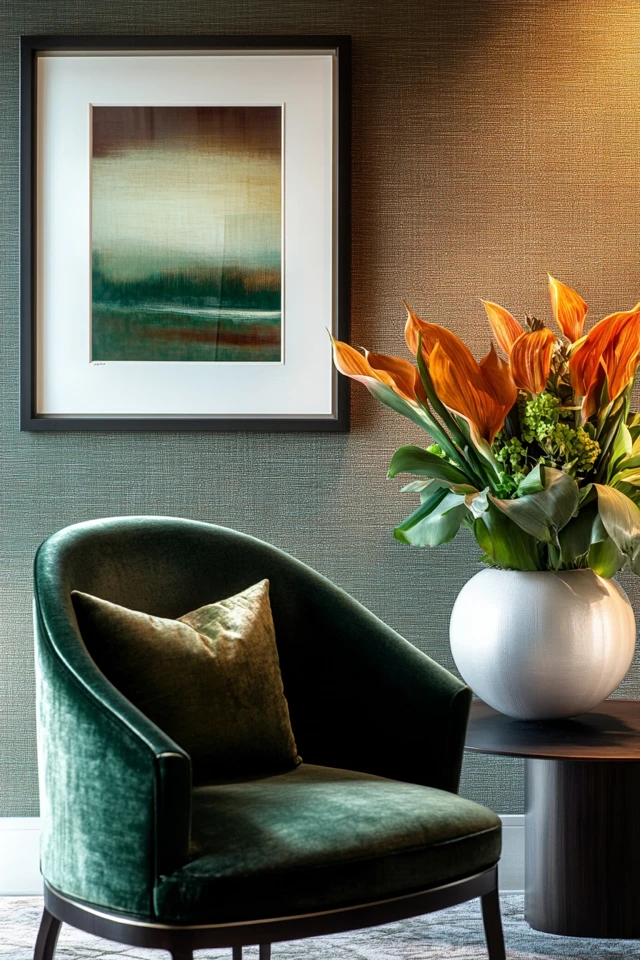
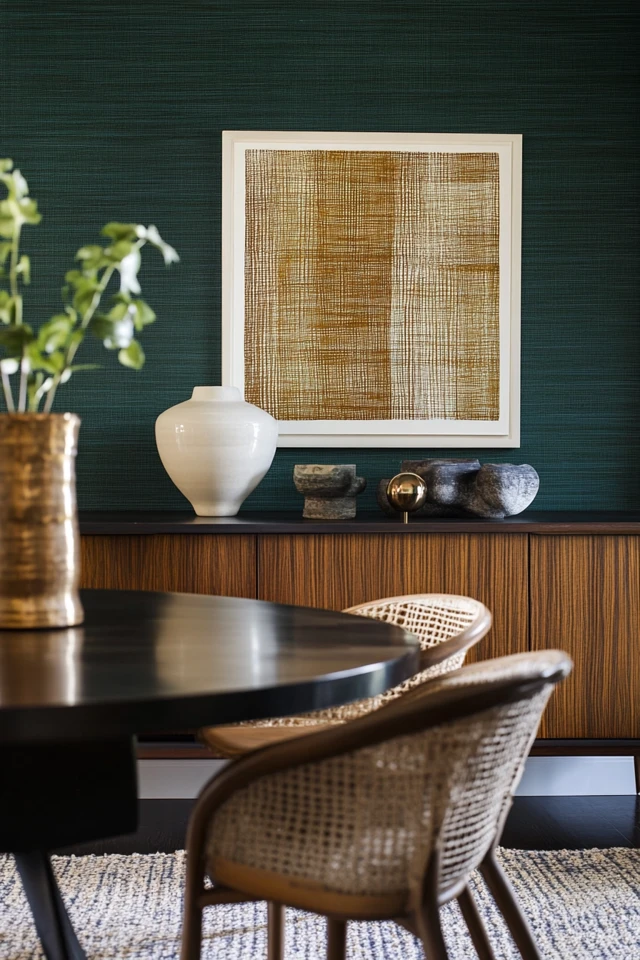
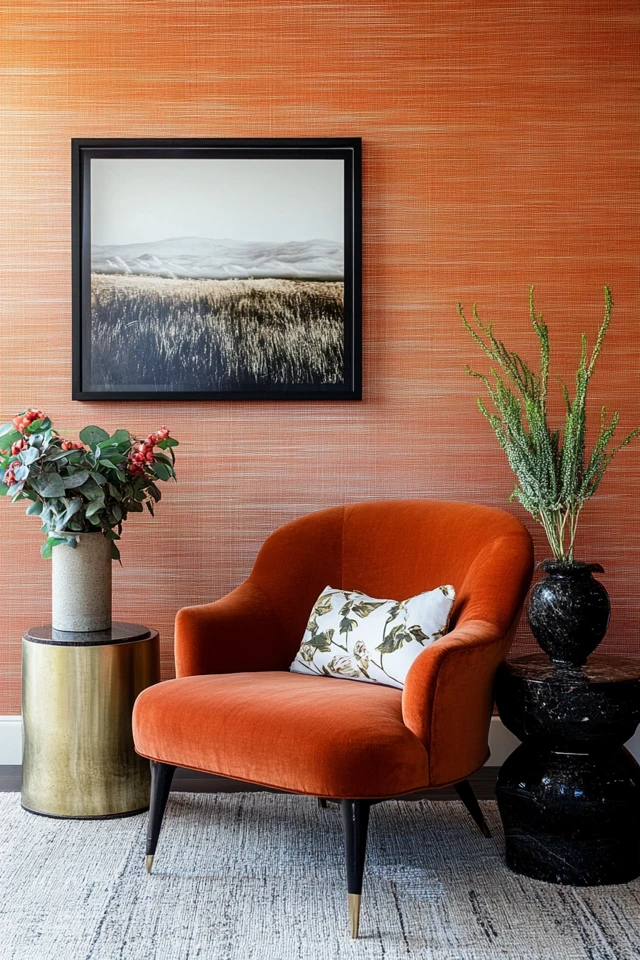
Why Visual Rhythms Matter
Visual rhythms are essential in interior design because they create a sense of order and unity. Here’s why they’re so effective:
- Establishes Harmony: By repeating elements, rhythm creates a cohesive look that ties a room together.
- Guides the Eye: Visual rhythms direct attention throughout the space, ensuring nothing feels overlooked or out of place.
- Adds Movement: Rhythm prevents designs from feeling static or dull, creating a sense of dynamic energy.
- Supports Functionality: Consistency in design makes a room easier to navigate and more enjoyable to use.
- Evokes Emotional Balance: Just like in music, visual rhythm creates a calming and pleasing effect by organizing chaos.
Designers often compare rhythm in interiors to the beat of a song—it sets the tone, ensures flow, and keeps the overall experience engaging. Without rhythm, a room can feel disjointed or visually overwhelming.
How to Incorporate Visual Rhythms: Step-by-Step
1. Identify a Repeating Element
- Choose an element to repeat across the space to establish rhythm:
- Shapes: Circles, squares, or organic forms.
- Colors: A specific hue or gradient that reappears in various places.
- Textures: Woven materials, glossy surfaces, or rough finishes.
- Patterns: Stripes, chevrons, or florals.
- Ensure the element aligns with your overall design theme and mood.
- Example: In a living room, repeat a navy blue accent color in throw pillows, a vase, and wall art to create a rhythmic flow.
2. Create Symmetrical or Asymmetrical Repetition
- Decide how you want to introduce rhythm:
- Symmetrical Rhythm: Perfectly balanced repetition, ideal for formal or traditional spaces.
- Asymmetrical Rhythm: Irregular but intentional repetition, creating a more dynamic and modern feel.
- Use symmetry for a sense of order, or asymmetry to add interest and movement.
- Example: In a hallway, hang a series of identical black-and-white photos for symmetrical rhythm, or alternate frames of different sizes for asymmetry.
3. Use Patterns Strategically
- Patterns are a natural way to introduce rhythm:
- Choose patterns that repeat a specific shape or motif.
- Mix patterns that share similar elements (e.g., two geometric patterns in different scales).
- Ensure patterns don’t compete—balance bold patterns with simpler ones.
- Example: In a dining area, pair a geometric-patterned wallpaper with striped chair cushions for complementary rhythms.
4. Leverage Color to Create Rhythm
- Repeat a color or gradient across the room to unify the design:
- Use accent colors in decor, textiles, and artwork.
- Layer tones of the same color family for a subtle gradient rhythm.
- Keep the palette consistent to ensure the rhythm feels intentional rather than chaotic.
- Example: In a kitchen, repeat the green from a backsplash in barstools, potted plants, and dishware to tie the space together.
5. Incorporate Shapes and Forms
- Repeating shapes helps establish visual rhythm:
- Choose geometric forms like circles, squares, or hexagons and repeat them in lighting, furniture, or decor.
- Echo architectural shapes (e.g., arches) in mirrors, windows, or furniture.
- Example: A bedroom with a rounded headboard, circular mirrors, and globe pendant lights creates a cohesive rhythm of curves.
6. Play With Spacing
- Rhythm isn’t just about repetition—it’s also about spacing:
- Use evenly spaced elements for a consistent beat (e.g., grid-style shelving).
- Experiment with irregular spacing for a more organic rhythm.
- Spacing controls how the eye moves across the room.
- Example: In a gallery wall, alternate the spacing between frames to create a playful, asymmetrical rhythm.
7. Add Rhythm Through Texture
- Textures can add depth and rhythm without overwhelming the space:
- Repeat a texture like wood, velvet, or glass across different surfaces.
- Combine textures to create layers of rhythm (e.g., smooth ceramic paired with woven textiles).
- Example: In a neutral living room, use a woven basket, a jute rug, and textured throw pillows to add rhythmic interest.
8. Incorporate Lighting for Dynamic Flow
- Lighting can emphasize rhythm by creating focal points and directing attention:
- Use pendant lights or sconces placed at regular intervals.
- Create rhythm with light and shadow by layering lighting at different heights.
- Example: In a hallway, a row of evenly spaced pendant lights creates a rhythmic path that guides the eye.
9. Repeat Architectural Elements
- Highlight architectural features to reinforce rhythm:
- Repeat elements like arches, columns, or paneling throughout the space.
- Use similar materials or shapes for built-ins and furnishings.
- Example: In an open-plan space, repeat the wood finish of exposed beams in the dining table and shelving units for a cohesive look.
10. Experiment With Scale and Proportion
- Varying the scale of repeated elements adds depth while maintaining rhythm:
- Combine small, medium, and large versions of a pattern, shape, or motif.
- Use oversized elements as focal points and smaller ones as supporting accents.
- Example: In a bedroom, an oversized floral wallpaper pairs beautifully with smaller floral patterns on the bedding and curtains.
FAQ
1. Can I combine different rhythms in one room?
Yes! Mix complementary rhythms (e.g., repeating colors with repeating shapes) to create a layered, dynamic design without overwhelming the space.
2. How do I avoid making repetition feel monotonous?
Introduce variations in scale, texture, or color within the repeated element to keep it interesting and dynamic.
3. What’s the easiest way to add rhythm to an existing space?
Start with small decor items like cushions, artwork, or vases that repeat a shape, color, or pattern found elsewhere in the room.
4. Can rhythm work in small spaces?
Absolutely! In small spaces, rhythm can make the area feel more organized and harmonious. Stick to subtle repetitions to avoid visual clutter.
5. How does rhythm differ from symmetry?
Symmetry is one type of rhythm that relies on balanced repetition, while rhythm also includes more dynamic, asymmetrical arrangements.
Variations
- Modern Minimalism: Use clean lines, geometric shapes, and repeated neutral tones for a subtle, streamlined rhythm.
- Bohemian Eclectic: Layer vibrant patterns, organic shapes, and textures for a playful, asymmetrical rhythm.
- Rustic Charm: Repeat wood finishes, natural textures, and earthy tones for a warm, inviting rhythm.
- Industrial Chic: Incorporate metal accents, exposed beams, and grid-like patterns for a bold, structured rhythm.
- Coastal Serenity: Use soft blues, whites, and natural materials like rattan or driftwood for a breezy, relaxed rhythm.
How to Showcase It
- Living Rooms: Use recurring shapes in furniture and decor, like circular coffee tables and rounded vases.
- Bedrooms: Incorporate repeating patterns in bedding, curtains, and art to create a serene flow.
- Dining Rooms: Align chairs, lighting, and decor in symmetrical or asymmetrical arrangements to emphasize rhythm.
- Bathrooms: Use tiles with repeating patterns or textures for a cohesive, spa-like feel.
- Kitchens: Repeat materials like wood, marble, or metal in cabinetry, countertops, and fixtures for a polished look.
Occasions to Feature It
- Everyday Living: Use rhythm to create balanced, calming spaces for daily use.
- Entertaining Guests: Add dynamic flow to living and dining areas to make them more engaging.
- Seasonal Decor: Use rhythm to layer seasonal touches, like repeating pumpkins or wreaths during holidays.
- Home Renovations: Incorporate rhythm to create cohesion in newly redesigned spaces.
- Creative Workspaces: Add rhythm to energize and inspire your office or studio.
Conclusion
Visual rhythm is the secret ingredient that transforms a well-decorated room into a space that feels alive and harmonious. By repeating shapes, colors, textures, and patterns, you can guide the eye, create movement, and establish a sense of unity that ties your design together.
Whether you’re designing a minimalist living room or an eclectic dining area, incorporating visual rhythm will ensure your space feels intentional, balanced, and full of character. So, let your creativity flow, experiment with repetition and variation, and enjoy the transformation as your home becomes a symphony of thoughtful design.

